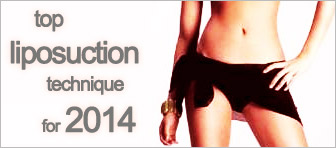“Top 10 Plastic Surgery Myths” by Mark Kamo
by Mark Kamo, Medical Research at Medplasts.com
Whether it’s because of Hollywood stars or disinformation from mainstream marketing and advertising, there seems to be 10 popular myths when it comes to modern plastic surgery. Oftentimes clients approach surgeons with a series of unfounded and misinformed preconceived notions and bias.
In this article we’re going to investigate the common myths and put them to rest. It’s time more people realized that like all other aspects of contemporary society, this industry has progressed and advanced by leaps and bounds. Let’s begin:
- Myth #1: There’s no real difference between a Cosmetic and a Plastic surgeon. Semantics play a big role in our lives, and when it comes to titles people need to do their homework and be informed. In reality, anyone that goes through the necessary steps to get a medical license can technically call themselves a cosmetic surgeon. Some physicians that possess no real training market themselves as cosmetic surgeons unethically. It happens.
- They key thing to look for is an official “Board Certification” specifically in plastic surgery.
- A big difference between the two is that plastic surgery revolves primarily around reconstructive-type surgery.
- In the U.S. there are no actual residency programs for cosmetic surgery.
- Myth #2: The certifications for both are also completely alike. There is one authority in this matter and that is the American Board of Plastic Surgery. They are the only officially recognized body that can certify someone is adequately trained in plastic (reconstructive) surgery. The training and education is extensive, similar to an MD (6-9 years of specialty education). There are extensive exams, both written and presented orally in front of boards.
If a cosmetic surgeon is claiming to have certifications from this place or that place, always remember that the American Board of Plastic Surgery is the only one that counts.
- Myth #3: There’s nothing safe about silicone breast implants. By now there is a large amount of data from numerous studies far and wide that show silicone is safe. On the flip-side, there is no widely recognized data that shows the implants will cause any diseases. Hearings conducted as recently as 2011 by the FDA showed the implants are safe and this is only becoming more so as time goes by.
- Myth #4: A common issue with silicone breast implants is that they tend to leak. Again, the modern implants are light years ahead of where they were back in 2006. As far as the tracking data is concerned, there is as low as a 1% chance of leakage within the first 7 years. Another thing to note is the form. It’s not a leaky gel or liquid, but more of a cohesive dough. Even if a leak were to occur, the silicone wouldn’t travel.
- Myth #5: In general, a better option would be to go with Gummy Bear implants. Right now Gummy Bear devices are still in an investigational phase. Unlike resembling bread dough, these are more solid in texture. They’re harder and feel far less real or natural than softer silicone implants. Better or worse is relative, but in general most people that get implants are after something that resembles and feels like the real thing.
- Myth #6: When it comes to safety saline is better than silicone. Both are considered safe by recognized authorities like the FDA. At the end of the day the only real difference comes down to the tendency of saline implants to have a higher rate of leakage caused by “rippling.” This leads the vast majority of plastic surgeons to advise their clients to opt for silicone.
- Myth #7: Choosing fat injections for breast augmentation is the wisest route. While this method has and is currently being heavily advertised, people should understand that it is still technically in an experimental phase. It’s an experimental procedure. The cost is higher both in terms of money and procedural time. Furthermore, surgeons have far less control with fat grafting. It’s ultimately impossible to predict how things will turn out.
- Myth #8: Liposuction is a temporary fix. The fat will return elsewhere. Liposuction is popular, and like breast augmentation has come a long ways. Now, in essence liposuction removes fat cells completely from the body. Therefore it is literally impossible for those fat cells to return. Fat only accumulates in the body from calorific surplus. The trick is that liposuction evens out the problem areas where people commonly gain weight.
- Myth #9: The best option is laser liposuction. Instead of removing the fat cells, laser-based liposuction dissolves them. After being dissolved it’s sucked out of the body and completely removed. While it sounds more complex it isn’t any more or less effective. It does however speed up the process and reduce the overall trauma people experience or have to recuperate from due to the procedure.
- Myth #10: There’s nothing safe about Botox, and it causes your face to look contorted. Breast augmentation, liposuction and Botox injections are the most common types of procedures, and all three are far advanced these days. Botox is not only safe, other than recuperating it does not scar or disfigure the face. When the surgeons are well-trained, experienced and know what they’re doing no one can notice that anything was done at all.
However, when people undergo too many Botox injections in too short of a period of time things like droopy eyelids can happen, or what some call the “frozen face” look.
When it comes to something as serious as cosmetic or plastic surgery, these myths cause more trouble than good. People need to check the hard data from recognized authorities first rather than listening to special interests or advertising agencies.
These two titles are not interchangeable. And, another myth t put to rest is that only women invest in these procedures. In fact, more and more men are doing the same things, especially Botox injections. Then there are things like hair transplants, liposuction, and many other things.
Don’t rely on myths. Get the facts when it comes to plastic surgery and be fully informed.
Your Opinion?
Latest posts by Mark Kamo (see all)
- “Long-term Psychological Effects of Cosmetic Surgery” by Mark Kamo - November 20, 2013
- “Top 10 Plastic Surgery Myths” by Mark Kamo - November 6, 2013














